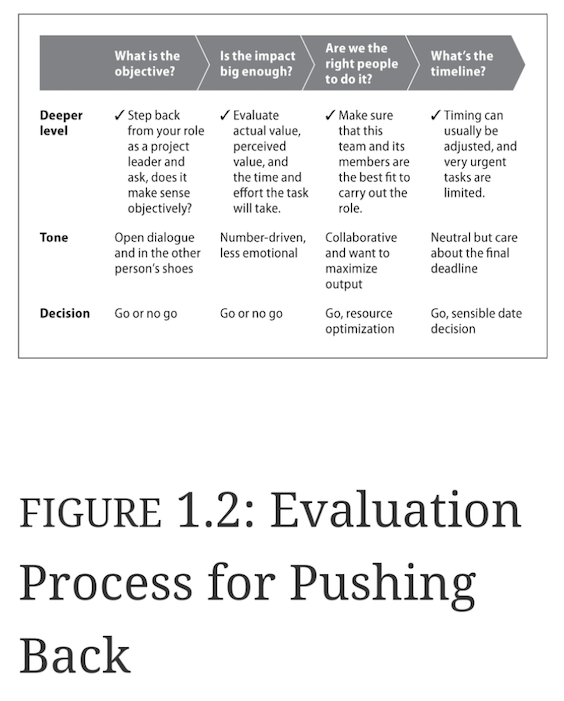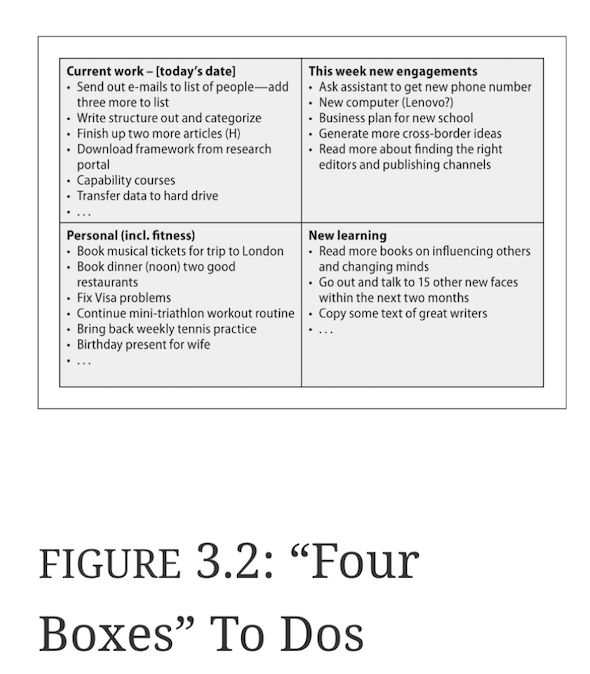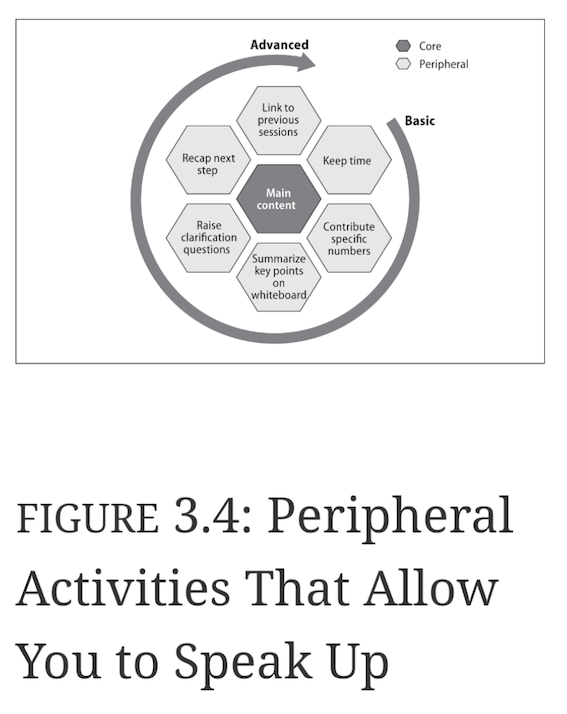The McKinsey Edge - Shu Hattori
This blogpost is not an exhaustive summary of the book. Just contains the notes I took
Success Principles
PRINCIPLE 1 Focus on What Really Matters. Constantly have a razor-sharp awareness of what you are doing and how it is adding value to you or to your problems.
PRINCIPLE 2 Start with the Hard Stuff in the Morning. Work on the hard and painful tasks in the morning to deliver productive output.
PRINCIPLE 3 Catch Small Signals and Make a Difference. Apply the Pareto analysis or 80-20 rule to your everyday life.
PRINCIPLE 4 Have a 30-Second Answer to Everything. Form an answer beforehand by mastering the “double-clicking” technique and coming up with short answers.
PRINCIPLE 5 Frontload Your Project. Build the necessary trust and credibility by completing work as much as possible during the first week, following the basket of essentials.
PRINCIPLE 6 Create the Right End Output Image. Try to get in the habit of creating the end output image aggressively to earn various stakeholders’ trust early on.
PRINCIPLE 7 Smile When You Are Under Stress. During stressful meetings, keep on smiling to reduce your stress and stay focused on getting the work done.
PRINCIPLE 8 Go Beyond Your Self-Perceived Limit. Growth is not glamorous but painful, you need patience and action: reach out to think outside the box, and focus on the now.
PRINCIPLE 9 Always Imagine the Worst-Case Scenario. Imagining the worst-case scenario will enable you to make decisions more quickly and think about the next-step actions.
PRINCIPLE 10 Start Following Up. Following up is an important skill to boost your credibility and stay on top of your game; codify to-do items to make it possible.
PRINCIPLE 11 Push Back with Less Emotion. Use the 24-hour rule and an evaluation mechanism to push back logically; don’t listen to anyone cruising at 33,000 feet!
PRINCIPLE 12 Be Flexible on the Perception of Your Passion. Develop some form of passion in your current work so that you get fired up.
PRINCIPLE 13 What Would Marvin Do? Find Your Role Models. Identify different role models to fit your development goals—the more the merrier.
PRINCIPLE 14 Know What Gives You the Most Energy in Your Day. Manage your energy gains and drains via knowing what you like and dislike throughout the day.
PRINCIPLE 15 Go Jogging to Smell the Flowers. Help prolong your perceived time and set priorities through detaching yourself from daily preoccupations.
PRINCIPLE 16 Create a Commitment Plan. Achieve greater things in life by setting aspirational targets and sticking through your plan.
PRINCIPLE 17 Always Memorize the First Three Sentences of a Presentation. This is a simple rule that can change the way you come across to everyone in the room.
PRINCIPLE 18 Communicate Using Fewer Words. Learn to say more with fewer words by asking yourself seven key questions for a synthesized delivery.
PRINCIPLE 19 Pause Three Seconds Before Answering Difficult Questions. Don’t blurt out an answer immediately; instead show others you can withstand the weight of silence.
PRINCIPLE 20 Question More and Talk Less. Grow by questioning and listening more to other people the way principals and successful entrepreneurs do.
PRINCIPLE 21 Turn No into Yes. Rather than correcting people impulsively, try to help them correct themselves by using suggestive questions.
PRINCIPLE 22 Don’t Show Half-Baked Output. Be selective about to whom and when to disclose your end product as your reputation is also on the line.
PRINCIPLE 23 Instantly Find a Connection in the Room. Start an important discussion with C-levels by finding some personal thing in common.
PRINCIPLE 24 Be a Giver, Not a Receiver. Become the one who is going to motivate people instead of being motivated all the time.
PRINCIPLE 25 Find the Best Intent in People. Stay positive and forward looking by always finding good things about people and their intent.
PRINCIPLE 26 Learn Team Members’ Defining Moments and Personal Sides. Try to get team members closer to you by building a deeper empathy and connection.
PRINCIPLE 27 Think of Everyone as a Helpful Individual, Not a “Resource.” Need I say more?
PRINCIPLE 28 Go Out for a Meal with Interesting People Every Week. Make it a deliberate habit to enlarge your current sphere of influence and knowledge.
PRINCIPLE 29 Consciously Gauge Your People. Turn into a great people-reader by analyzing team members’ process, problem analysis, will, collaboration, and past performance.
PRINCIPLE 30 Assign Team Members Meaningful Tasks. Provide opportunities to grow by giving independent, challenging, and reward-driven tasks.
PRINCIPLE 31 Create Followership Through Deliberate On-the-Job Coaching. Coaching team members is one of the most effective ways to create followership.
PRINCIPLE 32 Deliver Feedback Using Positive Criticism. Delivering criticism does not have to be harsh when you use a simple technique.
PRINCIPLE 33 Please Your Assistant and Support Staff. Assistants and support staff are crucial to your success; treat them with uttermost care.
PRINCIPLE 34 Always Prepare an Agenda Before Meetings. An agenda is an important priority-setting process, and it must be presented.
PRINCIPLE 35 Create “Four Boxes” To Dos. Optimize your to dos by dividing them up into four different sections: current work, this week new engagements, personal, and new learning.
PRINCIPLE 36 Focus on Outcome Not Activities. To focus on outcome and results, introduce a check-in and check-out policy.
PRINCIPLE 37 Know Your Meeting Modes in Advance. Segment your meeting categories in advance to preempt all the preparation work beforehand.
PRINCIPLE 38 Proactively Manage E-mail Communication Using the 5D Rules. Delegate, delete, defer, deword, and deactivate to enjoy a healthier e-mail-free lifestyle.
PRINCIPLE 39 Speak up as Early as Possible. Master the six peripheral speaking opportunities to be part of the discussion.
PRINCIPLE 40 Create a Minimalist Presentation Tool Kit. Memorize the six core charts that make up a presentation backbone structure.
PRINCIPLE 41 Create an Easy-to-Use Template for Updates. Always have a template for updates and make sure you involve everybody in your communication loop.
PRINCIPLE 42 Give Away Knowledge and Tools Unsparingly.. Put the “pay it forward economics” in full throttle to make others successful around you.
PRINCIPLE 43 Get Rid of Your Physical Barriers. Tune into your physical constraints that are pulling you back from reaching your full potential.
PRINCIPLE 44 Ask the Second Order Questions. Learn about the deep questions.
PRINCIPLE 45 Learn to Write Fewer Notes Enhance your memory by practicing writing fewer words and retaining more information, just as senior leaders do it.
RINCIPLE 46 Prepare to Renew Your Life. Become resilient, adaptable, and forgiving toward both the changes you want and the changes that are inflicted upon you.
PRINCIPLE 47 Create Your Own “Profile” as a Leader. Know the ultimate requirements for you to become a leader.
More Learnings
-
What really matters can be different from industry to industry. For consulting, it’s the message (so what?) and the estimated impact that implication brings—consultants arrive at this message and impact through following a series of problem-solving steps.
- In McKinsey’s case, it involves:
- identifying the problem,
- structuring the problem (making sure all the issues are covered by using a MECE, mutually exclusive and collectively exhaustive, approach),
- prioritizing and eliminating unnecessary problems,
- creating the analysis and work plan,
- conducting the analysis,
- synthesizing to derive meaningful results,
- delivering the right communication message. In the end, the message needs to be tailored to fit the client context (capability, resource, and execution power) to lead to any tangible impact
-
People who rise to leadership know more deeply who they are, what they are good at, and how to improve their strengths. But there is another, more subtle difference that I want to share with you. This technique sets leaders apart from others. At McKinsey, we focus on being distinctive.
-
It’s not realistic to try to convey much meaningful information in a very short period of time. That’s why you need to learn certain rules. The first rule is to understand the theory of “double-clicking.” It’s similar to when you read a comment or blurb of a certain product on an e-commerce site or a short summary snippet of a bestselling book. These tell you enough to get you interested but not nearly enough for you to know what’s happening. So you end up clicking the link to find out more. In the same way, a 30-second answer gives your listener the opportunity to keep refocusing the attention to the topic of his or her interest.
-
“The first day of any project needs to be as exhausting as the final day of the progress review,” You need to shine in the first week because that is when most of the impression about you will be decided by all of your stakeholders—your team, client, and senior leaders. Therefore, it is imperative that you bring in as much as you physically and mentally can during this period.
-
It is important to present a case with the ending already factored in. People would rather skip over multiple scenes to finish the movie, and they’d definitely want to grasp the sense of how things will turn out for a business presentation. People don’t like to wait. That is why you should learn to create an end output image all the time.
-
The higher up you go in the professional hierarchy, the better people are at hiding emotions underneath their smiles. It’s an extraordinary skill, and few have recognized it as something extremely useful as a leader.
- Every time at work someone gives you something outrageous to do, wait for 24 hours before you act upon it with a counteroffer. There are two basic underpinnings for this rule:
- People (and usually senior leaders) have the best interests of you and the company at heart.
- You will tend to regret any negative or rebuking answers you make when you are under emotional siege.

-
Using shorter sentences can also present you as a more mature leader.
-
Talking to someone using fewer words takes practice. It is a lot more difficult than it looks at first because it requires you to order and structure your story clearly, eliminate or omit certain details selectively, choose the right words carefully, and answer potential questions as much as possible in your description.
-
By concentrating on convincing people faster and with fewer words, you are building a unique skill. It’s like you are becoming the expert anchorman of a well-scripted TV news program. Aim for 30 minutes first and then try saying the same message in half that time (but not through learning to talk faster). Purposely set a time and weigh that against the amount of content delivered. At the same time, see the level of excitement you have generated.


